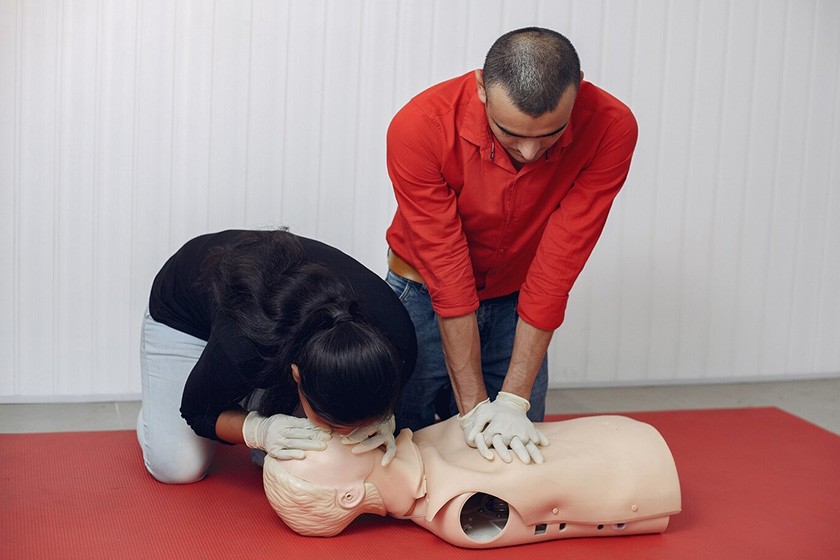
In today’s world, ensuring the safety and well-being of students is a top priority for schools and educators. One crucial aspect of this responsibility is being prepared for medical emergencies, and that includes knowing how to perform CPR (Cardiopulmonary Resuscitation). However, many teachers face concerns and challenges when it comes to CPR training. This article will explore these issues and provide solutions to help educators feel more confident and prepared.
CPR is a life-saving technique used in emergencies when someone’s breathing or heartbeat has stopped. For teachers, being trained in CPR means they can respond quickly and effectively if a student or colleague experiences a cardiac arrest or other medical emergency. This training can mean the difference between life and death, as every second counts during such critical situations.

Despite the clear benefits of CPR training, some teachers have reservations or face challenges in acquiring this vital skill.
One of the most common concerns among teachers is the fear of not performing CPR correctly. This fear can be paralyzing and may prevent educators from taking action during an emergency. It’s important to remember that performing CPR, even imperfectly, is better than doing nothing at all. Training programs are designed to help teachers gain the confidence and competence they need.
Teachers often have packed schedules, and finding time for CPR training can be challenging. However, many organizations offer flexible training sessions that can be tailored to fit busy schedules. Online courses are also available, allowing teachers to learn at their own pace.
Another concern is the cost of CPR training. While some schools cover the expenses, others may not have the budget for it. In such cases, teachers can look for community programs or nonprofits that offer free or low-cost training sessions.
Addressing the concerns and challenges associated with CPR training is essential to ensure that more teachers are prepared for emergencies.
Schools and districts can play a significant role in facilitating access to CPR training. By partnering with local health organizations or emergency response teams, schools can organize regular training sessions on-site. This not only makes training more accessible but also encourages more teachers to participate.

Creating a supportive learning environment can help alleviate the fear of inadequacy. Trainers should encourage open discussions about concerns and provide ample opportunities for hands-on practice. This approach helps teachers build confidence and feel more comfortable with their skills.
Schools can motivate teachers to undergo CPR training by offering incentives such as professional development credits, certificates, or even small rewards. Recognizing and rewarding teachers for their commitment to student safety can encourage more educators to participate.
Advancements in technology have made CPR training more accessible and effective. Virtual reality (VR) and online simulations offer teachers an interactive and immersive learning experience. These tools provide realistic scenarios where teachers can practice their skills in a safe and controlled environment.
Teacher CPR training is an essential component of ensuring a safe and secure learning environment for students. While there are challenges and concerns that educators may face, there are numerous solutions and resources available to overcome them. By addressing these issues and providing support, schools can empower teachers with the skills and confidence needed to handle emergencies effectively.
Ensuring that teachers are well-prepared for medical emergencies not only protects students but also enhances the overall safety and well-being of the school community. With the right training and support, teachers can make a significant difference in saving lives when it matters most.
If you’re an educator committed to fostering a safe environment for your students, consider enrolling in CPR and First Aid classes with CPR Classes Near Me. Their certified courses are designed to equip you with the necessary skills to act confidently in medical emergencies. Flexible class schedules and online options make it easier than ever to fit training into your busy calendar. By taking this crucial step, you’ll not only enhance your own preparedness but also contribute to a safer schooling environment for everyone. Start your training today, and be the difference in saving a life.
Our primary goal is to ensure that you receive a top-quality CPR/First Aid certification. With our in-person training in Austin, you can learn CPR and BLS in just one class. Your presence is all that’s needed to continue with your lesson! During your session, you will complete all the live-training components necessary to ensure you receive your AHA Healthcare Provider certification card.
Our CPR Classes in Austin are discounted to $59.95 (saving you $20), and our CPR + First Aid Class is offered at $79.95 (also saving you $20). When looking for CPR Classes, ensure to check for the American Heart Association seal. Other sites might seem cheaper but frequently lack the official training credentials demanded by employers.
Upon successful completion of the course, you will obtain a CPR certification that is valid for two years. The AHA CPR certification is recognized with the highest acceptance rate among employers nationwide.
Indeed! Enroll in any CPR Certification Austin BLS course to extend your certification for an additional two years. The in-person BLS course and the Renewal Class are identical.
Anyone capable of completing the course independently should consider pursuing CPR training and CPR Certification. There is no minimum age restriction for obtaining a CPR certification in Austin through the American Heart Association (AHA)..
CPR training needs to be carried out in person to guarantee its effectiveness. Our experienced instructors offer an engaging and dynamic learning experience. Typically, employers do not recognize CPR certifications that are obtained solely through online courses.
All authorized American Heart Association training centers are obligated to display the entire video. After a three-hour session with CPR Classes Near Me Austin, your BLS CPR eCard will be promptly issued by the instructor on the same day!